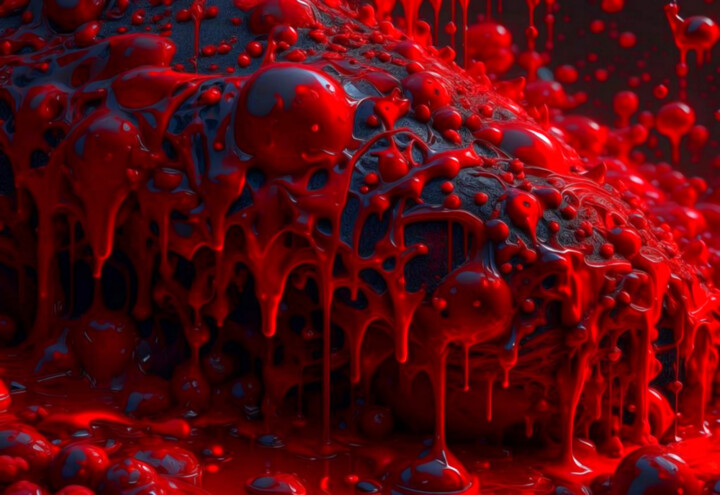Si Levin
haShabat haShkhora
This painting connects deeply with artistic movements and styles, that explore human suffering, trauma and raw emotion.
"Emotion over Realism": the work recalls Expressionism, an early 20th-century movement, where artists conveyed raw emotional experiences rather than literal depictions of reality. The intense red and dynamic texture here scream pain and urgency, hallmarks of Expressionist art.Artists like Edvard Munch ("The Scream") used vivid distorted imagery, to evoke psychological turmoil. This painting similarly abandons realism for a visceral gut-wrenching emotional impact.
"Physicality of Paint": the thick dripping layers of paint echo the techniques of Abstract Expressionists, like Jackson Pollock or Willem de Kooning. These artists emphasized the process of painting itself as a form of emotional release, using drips, splashes and chaotic strokes to externalize inner turmoil.The chaotic, almost violent application of paint aligns with action painting, where the act of creation mirrors the intensity of the emotions being expressed.
"Violence and Suffering": the dominant use of red has a long history in art, symbolizing blood, sacrifice and conflict. From religious art depicting martyrdom to Picasso's "Guernica", artists have used red to signify both literal and figurative violence.The saturation and depth of red in this piece command attention, perhaps as a plea or a warning about the event it represents.
"Visual Language of Tragedy": this painting fits within a modern tradition of artists responding to catastrophic events. Art from conflict zones often uses abstraction and non-representational forms to grapple with the ineffable horrors of war and human suffering.Works responding to events like the Holocaust, 9/11 or global conflicts often use disjointed, fragmented or surreal forms, as seen in this painting, to capture the psychological and cultural rupture such events create.
"Dripping and Bubbling Forms": the almost biomorphic texture recalls the organic abstraction of artists like Yves Tanguy or even elements of surrealism. The bubbling, oozing effect creates an unsettling sense of something alive and decaying — a metaphor for destruction and transformation.
The abstract nature invites viewers to project their own interpretations, aligning it with works by artists like Mark Rothko, who believed art should evoke deeply personal emotional responses.
This painting channels art's power to process and respond to unimaginable events, turning emotion into a universal visual language. It belongs to a lineage of works that make us confront tragedy, reflect on its meaning, and feel its weight—no matter how abstractly depicted.
It's always a pleasure to explore the layers of meaning in art.

